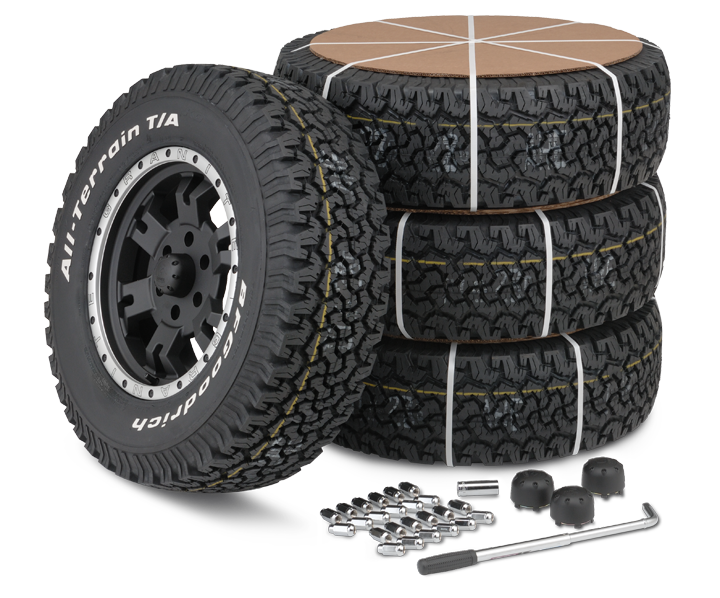Tire Solution: Recognizing Tire Stress Tracking Systems
Understanding Tire Pressure Surveillance Equipments (TPMS) is a crucial element of keeping optimal automobile efficiency and safety when traveling. With advancements in automobile modern technology, TPMS has ended up being a typical feature in contemporary lorries, providing real-time info on tire stress levels. Diving much deeper into the complexities of TPMS, one can reveal the numerous components that make up this system and the value of each in making certain accurate monitoring. From direct to indirect TPMS systems, the landscape of tire pressure tracking is diverse, each with its special collection of advantages and factors to consider. Stay tuned to unravel the intricacies of TPMS, from upkeep pointers to the indisputable benefits of maintaining your tires effectively inflated. tires morris il.

Importance of TPMS
The value of Tire Stress Surveillance Solutions (TPMS) hinges on their ability to improve car safety and efficiency with real-time monitoring of tire stress degrees. Keeping the correct tire pressure is important for guaranteeing optimal handling, stopping, and overall safety and security of a lorry. TPMS offers drivers with prompt comments on any overinflated or underinflated tires, permitting prompt modifications to be made.
Components of TPMS
Sensing units are normally located in the tire valve stem or attached to the wheel setting up, where they determine tire pressure and transfer data to the control component. Some advanced TPMS models likewise display the real tire pressure analyses for each tire, offering drivers with real-time details to guarantee optimal tire performance and security. By keeping track of tire stress constantly, TPMS aids stop accidents, lowers tire wear, and improves gas efficiency, making it a crucial element for vehicle security and efficiency. morris tire and alignment.
Sorts Of TPMS

On the other hand, indirect TPMS depends on the automobile's wheel rate sensing units to monitor tire pressure. This system spots underinflation by comparing the rotational speeds of the wheels. Indirect TPMS is less expensive than direct TPMS, as it uses existing sensors within the car.
While direct TPMS uses a lot more precise analyses, indirect TPMS is easier in layout and commonly calls for much less upkeep. Both systems have their benefits and constraints, and the option between them frequently depends on elements such as cost, vehicle make, and personal choice. Recognizing the distinctions between these two kinds of TPMS can aid lorry proprietors make notified decisions regarding tire upkeep and safety and security.
TPMS Upkeep Tips
Conduct regular checks on the tire pressure levels and compare them with the TPMS readings to ensure they are consistent. During tire rotation or replacement, make sure that the TPMS elements are dealt with very carefully to protect against any kind of possible damages. If the TPMS advising light brightens on the control panel, resolve the concern promptly by checking the tire stress and the overall system for any kind of mistakes.
Advantages of Correct Tire Stress
Maintaining appropriate tire pressure, as stressed in TPMS Maintenance Tips, is crucial for gaining the various advantages related to optimum tire stress levels. Among the primary benefits of keeping the proper tire pressure is boosted fuel efficiency. When view it now tires are effectively blown up, there is less moving resistance, leading to much better gas economic climate. In addition, appropriate tire pressure makes certain even tire wear, prolonging the life-span of the tires and promoting more secure driving problems. With the right tire pressure, automobiles view it also have much better handling and traction, especially in damaging weather. This can boost overall driving performance and safety for the motorist and guests. Preserving ideal tire pressure can add to a smoother and more comfy ride by lowering vibrations and sound caused by underinflated tires. To conclude, the benefits of correct tire pressure go past simply tire durability; they incorporate boosted fuel effectiveness, enhanced safety, better vehicle performance, and total driving comfort.
Final Thought
Finally, understanding tire stress tracking systems (TPMS) is essential for maintaining optimum tire pressure and guaranteeing vehicle safety and security. By identifying the relevance of TPMS, recognizing with its parts, understanding the different kinds offered, sticking to correct upkeep suggestions, and realizing the advantages of maintaining correct tire stress, vehicle drivers can boost their driving experience and extend the lifespan of their tires. Correct tire pressure is vital to safe and effective view it lorry procedure.
